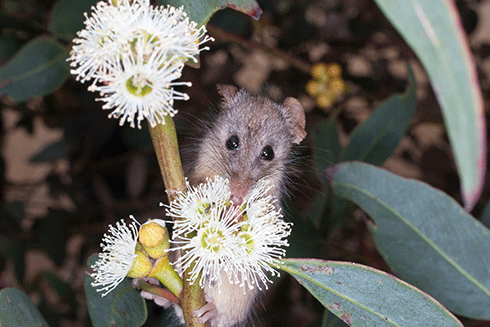
|
Published: 31 March 2014
Reconnecting landscape: it’s not just about planting trees
How do we know when revegetation programs are successful? More specifically, when the aim is not just to regenerate tree species but to reconnect fragmented landscapes and bring back wildlife, how do we know what success looks like?
Australia has seen many attempts to revegetate farmland since the 1990s. In the Western Australian cereal-growing area, for instance, paddocks have been replanted in different ways, ranging from single tree species in single rows to more than one hundred native species planted in different soil types, and every variation in between.
As an ecologist working on Gondwana Link – an ambitious landscape connectivity project on the south coast of WA – finding answers to such questions is a focus of my work.
The goal of Gondwana Link is to restore farmland between two national parks: Stirling Range and Fitzgerald River. The area, a globally recognised biodiversity hotspot, has seen almost 90 per cent of its eucalyptus woodlands and 50 per cent of its eucalyptus-dominated mallee cleared for farming.
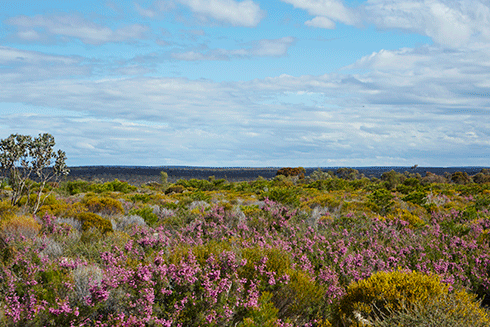
|
|
A globally recognized biodiversity hotspot: mallee landscape within the Fitzgerald River–Stirling Range area. Credit:
Jessica Wyld
|
At one level, the success of revegetation efforts can be gauged by counting the number of hectares planted then recording which plant species survive. A less common measure is to record the presence of birds. More commonly, however, plants or seeds are put into the ground and left to do their own thing – with little or no follow-up monitoring.
For revegetation to be deemed a success, more intensive research-based projects are sorely needed.
Bush Heritage Australia – a non-profit organisation dedicated to protecting Australia's unique animals, plants and habitats – is intimately involved with Gondwana Link. It owns and/or manages six properties in south-west Australia, totalling almost 8000 hectares. Of this land, 1500 hectares has required active restoration over the last ten years.
Through a process of adaptive management, using the open standards for the practice of conservation, Bush Heritage Australia is continually refining its restoration methods to increase the likelihood of native animals recolonising former cleared farmland.
The organisation began revegetating its latest property acquisition, Monjebup North, in 2012. Before revegetation started, we analysed the vertebrate fauna known to live in the different vegetation types found in the area. These include mallee heath on shallow soils, and flat-topped yate, mallet and moort woodland.
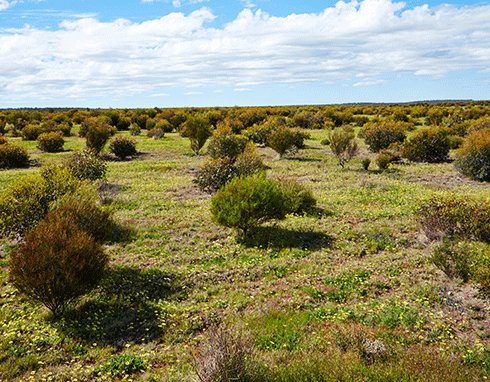
|
|
Former farmland in a Gondwana Link area under restoration. Credit:
Jessica Wyld
|
Fortunately, the habitat preferences of the vertebrate fauna in this area are fairly well known. As long as they were provided with adequate habitat, the bird, reptile and mammal species included in our analysis could reasonably be expected to recolonise the restored areas.
Our list excluded highly nomadic species (e.g. black honeyeater), species that have flourished in the wake of agriculture (e.g. galah), and those requiring a larger home range than is provided by the restored area and immediate surrounds (e.g. wedge-tailed eagle).
Depending on their major food source, each species was placed into one of the following groups: insectivores, carnivores, omnivores, large and small nectarivores (animals that eat nectar from flowers) or granivores (animals that eat seeds and grain).
Where information was available, we analysed each species’ feeding strata (the level at which they feed: e.g. on the ground, in low shrubs, or high up in trees). We also looked at the genus of plants that the animals visited and the types of nesting material they used. We then summarised ways to provide suitable food and habitat resources for each group.

|
|
Ecologist Angela Sanders (front) carrying out vegetation monitoring. Credit:
Jessica Wyld
|
For instance, most of the small mammals are terrestrial, eat invertebrates, and use hollows and vegetation for shelter. We provided this information to a restoration specialist, who ensured that the plant species used for revegetation would eventually provide these resources for fauna.
Our summary also highlighted other important habitat components, such as rocks, logs, leaf litter and soil that could be readily burrowed.
As part of our planning process, we assessed the success – or otherwise – of earlier revegetation efforts, and found that one of the missing elements was micro-habitat on the ground for reptiles and small mammals.
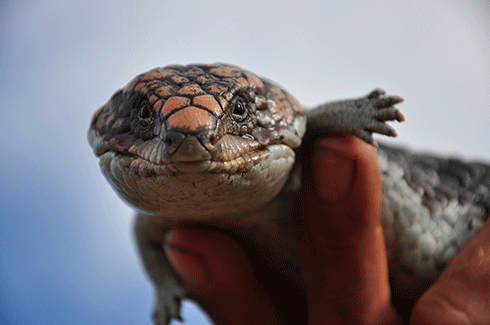
|
|
Replicating natural ‘micro-habitat’ encourages the return of small mammals and reptiles, such as this shingleback. Credit:
Annette Ruczika
|
How can this critical habitat be provided in a cleared landscape, where most woody debris disappeared long ago?
We have trialled several methods, including distributing native vegetation cleared from a fenceline throughout the restoration area, redistributing rock and log piles left over from land clearing, and scattering old sheets of tin and other building material.
Another missing element common to most previous revegetation efforts was the lack of nectar and pollen over all seasons. For example, the tiny honey possum (Tarsipes rostratus) relies on a year-round source of pollen and nectar. To sustain the honey possum, we used the known flowering phenology (i.e. the flowering time in different seasons) of local plants and included as many as possible to provide a year-round food supply.
It’s now been eight years since Bush Heritage Australia’s first property, Chereninup, was revegetated. After monitoring the numbers of vertebrates that have recolonised the revegetated areas, we can say that around 75 per cent of the expected bird species are using the revegetated areas to some extent. Pygmy possums, honey possums and grey-bellied dunnarts have been captured 3–4 years after planting.
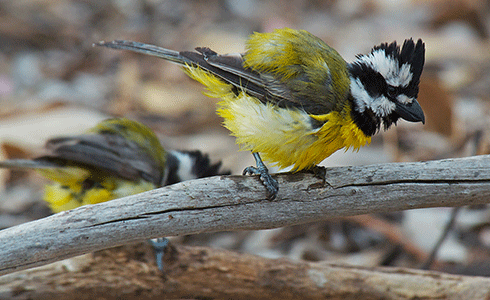
|
|
An unexpected windfall from restoration work: the reappearance of the crested shrike tit. Credit:
Brian O’Leary
|
At Chereninup Creek – one our first projects in Gondwana Link – we have seen a 300 per cent increase in bird activity across 60 hectares of cleared paddocks. More than 40 bird species have been recorded, including the western whipbird and southern scrub robin, and the revegetated areas are now supporting as many birds as the undisturbed mature mallee heath on Chererinup.
Small reptiles still remain elusive; however, it is still too early to assess our latest micro-habitat restoration work.
Setting the trajectory for plant community composition at the time of planting, and determining which fauna species we expect to recolonise the revegetated areas provided us with a measure of what restoration success will look like. We can now continue to track fauna use, and tweak our restoration methods to constantly improve them.
Angela Sanders is an ecologist with Bush Heritage Australia.
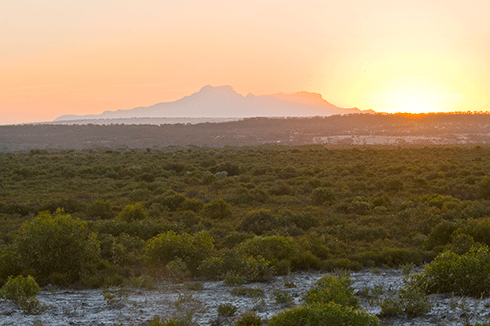
|
|
The magnificent Stirling Range National Park in WA. Credit:
Jiri Lochmann
|


